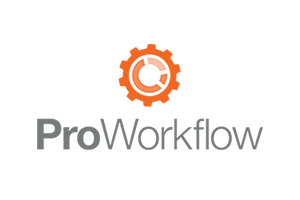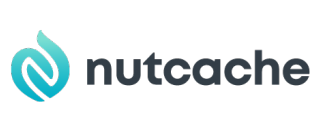💸 See if your business qualifies for a tax credit worth up to $26k per employee. 📞 Call Now: 855-979-9597
Best Project Management Software and Tools in 2023
Data as of 12/22/22. Offers and availability may vary by location and are subject to change.
We are committed to sharing unbiased reviews. Some of the links on our site are from our partners who compensate us. Read our editorial guidelines and advertising disclosure.
Bottom line: Asana is our best overall pick thanks to its beautiful interface that packs plenty of powerful tools for a very affordable price. Zoho Projects is excellent if you need something more affordable, while Trello is excellent for beginners needing an easy-to-use platform. Backlog is tailored to software developers, while EasyProjects is an advanced title chock full of powerful perks.
- : Best overall project management software
- : Best budget option
- : Most user-friendly
- : Best for software development
- : Best features
- : Most versatile
- : Best reporting tools
- : Best flat-rate option
- : Best advanced option for developers
- : Great for content publishing

Project management software comparison
Data as of 12/22/22. Offers and availability may vary by location and are subject to change.
Asana: Best overall project management software
Data as of 12/22/22. Offers and availability may vary by location and are subject to change.
Asana is one of the best cloud-based project management systems on the block―and it’s our recommended project management solution for most businesses.
Why? Well, Asana is flexible enough to work for both Agile-style and Waterfall-style approaches—whatever your team prefers. And even if your team has a million tasks to tackle, Asana is built to help you break that elephant down into bite-sized pieces. Before you know it, that elephant has become an organized checklist of tasks and subtasks.
Also, Asana includes an individual dashboard for each team member, which makes it easy to manage all the individual tasks and deadlines without getting in each other’s way.
Aside from customizable web-based project collaboration, Asana also emphasizes project tracking and transparency. Project managers will be especially happy with Asana’s Gantt charts and generated reports. All these tools will let them track time, manage multiple projects, and collaborate easily.
While we’re talking tools, we have to say that Asana gives you a way to manage everything. It’s got marketing integrations, sales integrations, real-time collaboration, a mobile app, and more. With Asana you will have all the best project management resources at your fingertips, including Slack, Evernote, and Harvest.
Asana plans and pricing
Data as of 12/22/22. Offers and availability may vary by location and are subject to change.
With all that said, there’s a learning curve when it comes to using this project management tool. For all of its bells, whistles, and integrations, Asana isn’t always the most intuitive. Maybe that’s the drawback to being so flexible and adaptable—users have to adapt to Asana’s adaptability.
Oh, and Asana doesn’t have a team chat capability on the software itself, so collaboration won’t be completely seamless. Asana does allow team members to sign up for email updates, and it integrates with Slack. So you’ve got collaboration workarounds―just not perfect, easy team collaboration through native features.
Fortunately, those are relatively minor drawbacks (drawbacks you’ll find in plenty of other management software, by the way). And Asana makes up for them with its competitive pricing on all the features we love. It even has a great free plan for your small team.
With plenty of pros and relatively few cons, Asana’s customizable project management app is our favorite project planning and tracking software for most businesses.

By signing up I agree to the Terms of Use and Privacy Policy.
Zoho Projects: Best budget option
Data as of 12/22/22. Offers and availability may vary by location and are subject to change.
Looking for a budget-friendly project management app? We recommend Zoho Projects and its affordable plans.
Zoho Projects offers pretty much the lowest per-user pricing out there. If you’ve got a small team (think three users), you might be able to get by on its free plan. But even if you go with a Zoho’s paid plan, you only end up paying a handful of dollars per user―and you still get plenty in return. In fact, Zoho Projects’s low-priced plans get you features other software would charge way more for.
Zoho Projects plans and pricing
Data as of 12/22/22. Offers and availability may vary by location and are subject to change.
For example, with the Premium plan, you get 100 GB of storage, dozens of users, unlimited projects, and access to quite a few project templates. You also get more advanced features like time tracking, project budgeting, and custom project views. And if you pony up for Enterprise, you get tools to help with resource management, inter-project dependencies, and more.
Now, some larger teams may find that flat pricing (like the kind Backlog and Basecamp use) ends up being a better deal than Zoho Projects’s competitive per-user pricing.
But for most teams, Zoho Projects offers an affordable project management tool that doesn’t skimp on the features.
Trello: Most user-friendly
Data as of 12/22/22. Offers and availability may vary by location and are subject to change.
Lots of project management software comes with a steep learning curve. Not Trello though―it’s delightfully easy to learn and use.
Trello’s core project management system uses a drag-and-drop dashboard that’s more or less a Kanban board. Each project card clearly displays the most important information. Plus, Trello uses clean, intuitive icons that take the guesswork out of things like adding a new task or deadline. Even if your creative team has never used Trello before, it should have no problem picking it up within minutes.
Trello plans and pricing
Data as of 12/22/22. Offers and availability may vary by location and are subject to change.
Don’t worry, though―Trello’s simplicity doesn’t mean you have to compromise on functionality. You can add “power ups” to your Trello board to get more features, from custom task fields to integrations with other software to Gantt board views. In other words, you can customize Trello quite a bit so that it meets your project needs.
Just keep in mind that you will need a paid plan to make use of those power ups. And some power-ups (ones not made by Trello itself) come with additional fees or subscription costs.
Still, Trello’s easy-to-learn interface makes it a user-friendly software for even complex project needs.

Backlog: Best for software development
Data as of 12/22/22. Offers and availability may vary by location and are subject to change.
Backlog provides an excellent project management platform for the complex project needs of software development. (Jira does too, but we’ll talk about it in a minute.)
With Backlog, you get the usual project and task management tools (like Gantt chart and Kanban board views, the ability to create and assign tasks, and file sharing). But you also get some management tools just for software development―tools like Git repositories, bug tracking, version control, and even customizable guest views for your clients.
Backlog plans and pricing
Data as of 12/22/22. Offers and availability may vary by location and are subject to change.
You might also like the flat-rate pricing (rather than per-user pricing) that makes Backlog pretty affordable for larger teams. And speaking of your project team, Backlog comes with team collaboration features such as team chat and the ability to create a team wiki for easy information sharing.
Now, you do need to understand that Backlog isn’t the most advanced management software. You won’t get things like budget tracking, time tracking, or even Kanban board views. So while Backlog can work beautifully for software teams, it may feel too restrictive for some project management styles.
If you can deal with those limitations, though, Backlog’s project management system can simplify your software development project planning and execution.
EasyProjects: Best features
Data as of 12/22/22. Offers and availability may vary by location and are subject to change.
If you want top-tier project management features from powerful software, you need to know about EasyProjects.
You see, EasyProjects comes with the same kinds of task management features other project management software has. You can get your Gantt chart or your Kanban board, view project progress, create tasks and subtasks, and all those other things you’ve come to expect. But while other project management software stops there, EasyProjects keep going and going with its features list.
EasyProjects software pricing
Data as of 12/22/22. Offers and availability may vary by location and are subject to change.
For example, you can get time tracking, project cost management, and project billing. All plans come with generous amounts of storage, at least some data encryption, and thousands of software integrations. Heck, you can even get AI-powered features that let you forecast project completion based on your past data. And there’s more. Easy Projects offers all the best features.
The catch? The price, as you can guess. Easy Projects has a very high per-user starting price for even its most basic plan. And to get all the best features, you’ll need a higher-tier plan, which will cost you more. Easy Projects is not a cheap solution.
Still, if features matter most to you―more than cost in particular―you’ll have a hard time finding a more feature-loaded project management platform than Easy Projects.
Honorable mentions
By now you should have a good idea of what the best project management systems offer, but if none of our top five quite fit the bill for your freelance graphic design company, we have some more options for you.
Google Workspace: Most versatile
Technically speaking, Google Workspace isn’t a project management software. But it offers a powerful suite of tools―including team chat, calendaring, word processing, spreadsheets, and form creation―that you can easily adapt for project management.
Google Workspace plans and pricing
Data as of 12/22/22. Offers and availability may vary by location and are subject to change.
As an example, you could use Google’s Calendar app to set deadlines, and then use Calendar’s task function to make sure your team gets to all the steps on time. Or you could use Sheets, the spreadsheet app, to create a Gantt chart or a project timeline. The point is, Google Workspace can be customized to work for your project management style. And as an added bonus, Google Workspace’s tools can be used for plenty of things aside from project management.
Note, though, that it will take more work on your part to set up Google Workspace for your project management. For example, to create that Gantt chart we mentioned, you’ll either have to create one from scratch or find a template you can use. If you’d prefer versatility to built-in functionality, though, Google Workspace offers loads of powerful software.
ProWorkflow: Best reporting tools
Are you a data lover? (We feel you.) Then you’ll love all the ways ProWorkflow lets you view and use data. It has excellent project reporting tools that let you easily get useful information about what matters most to you.
You can get started with ProWorkflow’s standard reports, or you can customize your own reports. Either way, you can view data about projects, tasks, expenses, time, and more. Plus, ProWorkflow gives you options for sharing your reports (or for keeping them private), so your whole project team can benefit from your data.
ProWorkflow software pricing
Data as of 12/22/22. Offers and availability may vary by location and are subject to change.
While we love ProWorkflow’s reporting tools, we have to point out that it is one of the more expensive project management software on this list. But with powerful reporting (plus tons of other project management features), data-savvy teams will find ProWorkflow worth the cost.
Basecamp: Affordable alternative
For $11 per user per month, you can use Basecamp to manage as many users and projects as you want. You’ll get task lists, team chat, file storage, and all the other team collaboration tools you’d want from your project management solution. You just get all that at one flat monthly rate.
Basecamp software pricing
Data as of 12/22/22. Offers and availability may vary by location and are subject to change.
Jira: Best advanced option for developers
If Backlog sounds a little restrictive for your software project management needs, we suggest going with Jira instead. It offers a more advanced (and more complicated) solution for teams that need more customizability and power.
At a glance, Jira seems to have similar features as Backlog. It’s got different project views (like a Scrum board and Kanban board), version control tools, bug tracking, and other software-related features. The difference? Jira offers tons of customizability. For example, you can automate recurring tasks in Jira, and you can expand its functionality with loads of software integrations.
Jira software pricing
Data as of 12/22/22. Offers and availability may vary by location and are subject to change.
Of course, that added power comes at a cost―literally and figuratively. Jira uses per-user pricing that can quickly make it more expensive than Backlog, and its software has a steep, steep learning curve. But if you can invest the time and the money, Jira offers a robust solution for complex project management needs.
Airtable: Best for content creation
Airtable specializes in document management, making it ideal for content creation. (In fact, we use Airtable to manage projects here at Business.org―including this very article.)
Like other project management software, Airtable lets you create and assign tasks. But Airtable emphasizes a project’s revision history―so you can see exactly when someone attached a document, changed the attachment, added comments, tweaked project labels, or made other changes. It’s ideal for content processes that involve revisions, editing, proofing, and otherwise revisiting the same documents over and over.
Airtable software pricing
Data as of 12/22/22. Offers and availability may vary by location and are subject to change.
Different plans come with different revision history lengths, so you’ll need to pick a plan that has enough revision history for your team. Do that, though, and you’ll see why content teams love Airtable’s well-organized collaboration tool.
Every software on this list offers some kind of free trial (though some give you more time than others). So before you commit to a project management solution, try it out and make sure it works for your team.
The takeaway
You’ve got plenty of choices for software that makes managing projects easier. You just have to decide which one will work best for your team and your business.
For most businesses, Asana offers the best project management solution, thanks to its flexibility, customizability, and good prices. But if that doesn’t seem like quite the right fit, we’re sure one of our nine other options will help.
Good luck on your projects!
Still aren’t sure whether a project management system would be worth the cost? Refer to our article “How to Measure Your Return on Investments (ROI).”
Project management software FAQ
With a little time, most teams can learn to use just about any project management software―but we think Trello offers the easiest project platform.
As we say in our review above, Trello uses a drag-and-drop interface that highlights important information. It’s only slightly more complicated than a game of Solitaire. So if you want an easy-to-learn management tool, we recommend going with Trello.
Most project management software (including Asana, Zoho Projects, Trello, Backlog, and more) offer a free project management plan. Most of them do restrict the number of users or projects you can have though, so you might need to get a paid plan.
That said, if you have relatively simple project management needs, we think Trello is your best bet for free project management software. It’s one of the few tools that doesn’t limit the number of users or projects on its free plan, and you get all the core functions of Trello’s software.
Should I use an Agile or Waterfall project management tool?
The best project management tool for your startup business depends on how you manage your workflow. There are basically two ways to do this:
Agile: Your product goes through multiple tests and versions. There is no set-in-stone order to getting your deliverable made. It’s like basketball. Yes, the hoops stay in the same place and the ball bounces between the same players, but the ball is going to get passed around to the different players in a different order every time before it makes a basket.
Waterfall: Whatever you’re making, it has a process written in stone. This one is less like a basketball game and more like making cookies—your grandma’s secret recipe for cookies that won’t turn out right if you switch the steps around.
What should good project management tools do?
A good project management tool should take the kinks out of your teams’ collaborations and give you, the manager, the ability to see the big picture.
During your free trial, see if the system’s collaboration tools meet your business’s needs. Are your team members feeling limited by the interface or any of the features?
Can you, as the manager, see what’s going on and what’s getting done without having to stop by everyone’s desk or send a thousand emails? Are there any features you are desperately wishing for that another system might have?
Also, consider how you expect your company to grow in the next few years. Is this system scalable enough to still work for your company in the next year, five years, or decade?
Methodology
We analyzed each brand's overall value for the money, scalability, customer service quality, ability to handle large amounts of data, price per user, data storage capacities, and minimum subscription term requirements, among other factors.
Disclaimer
At Business.org, our research is meant to offer general product and service recommendations. We don't guarantee that our suggestions will work best for each individual or business, so consider your unique needs when choosing products and services.
















